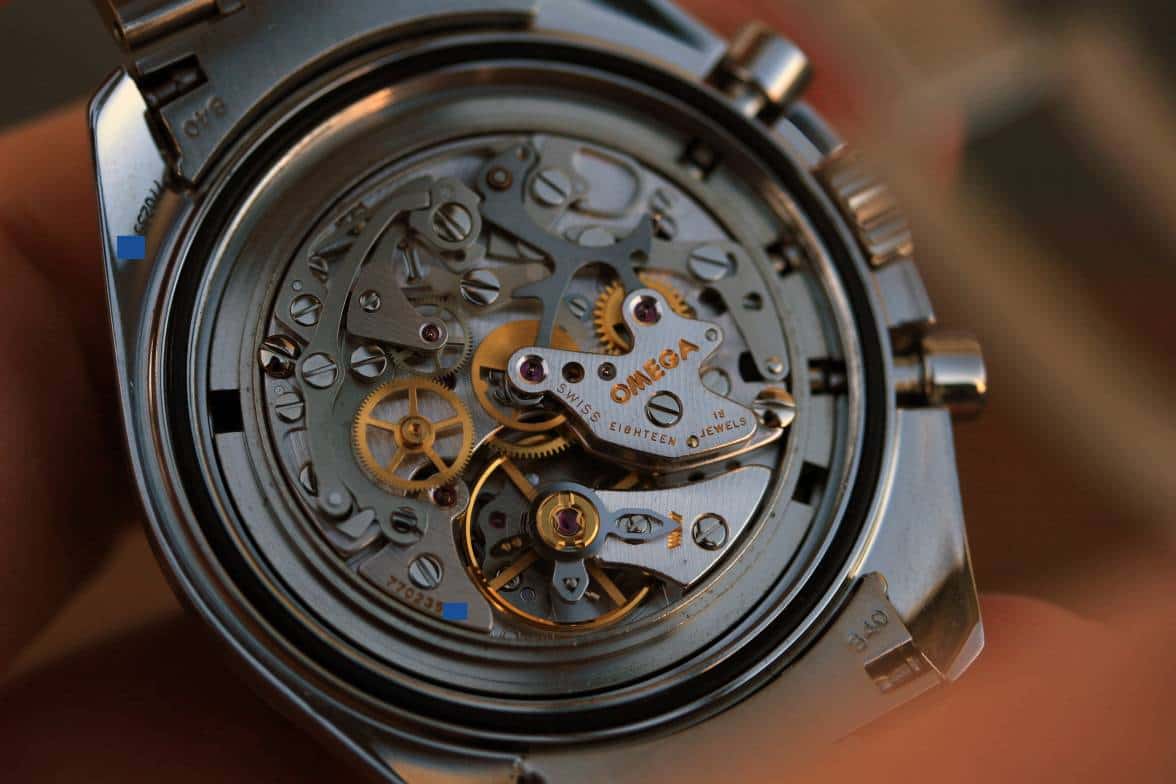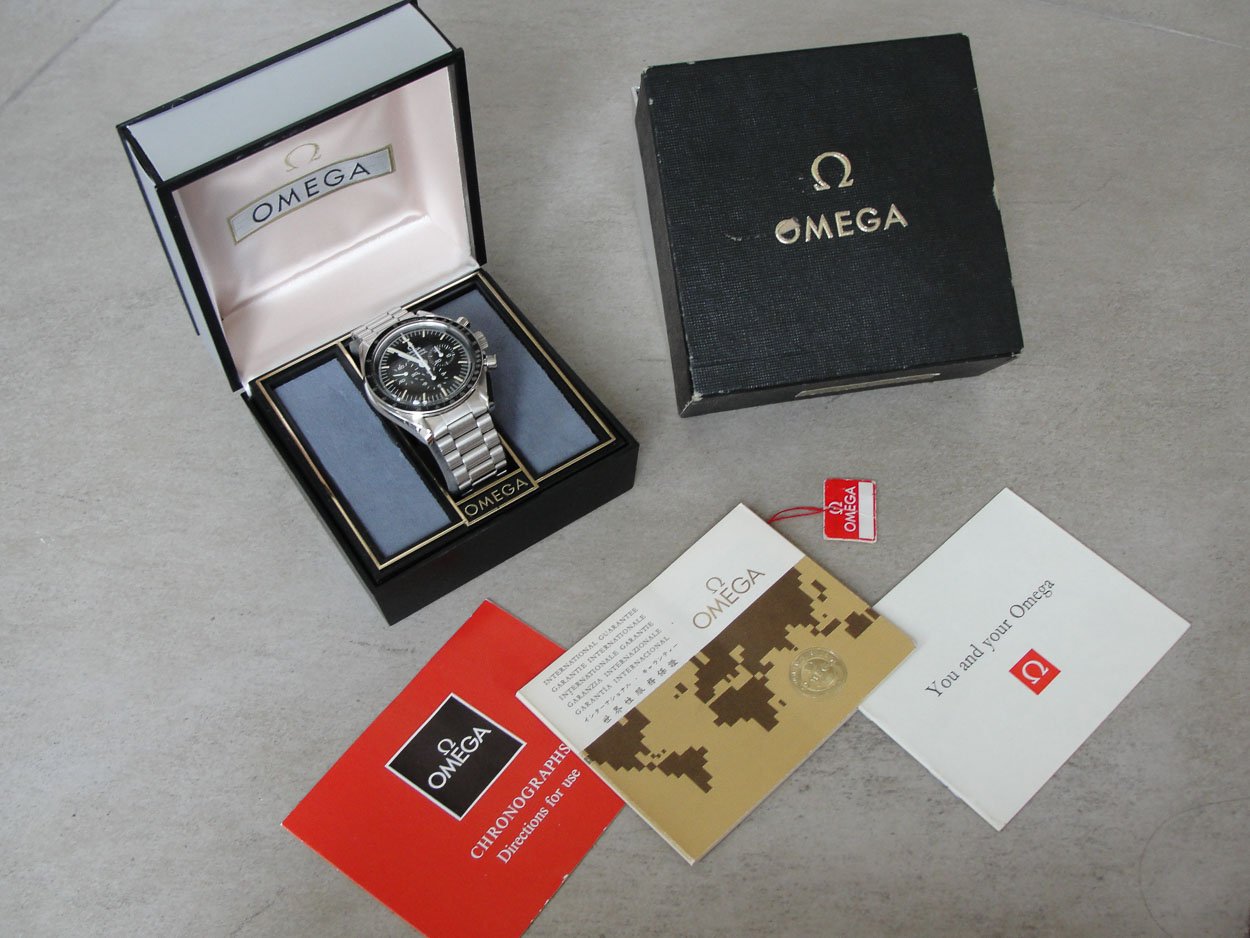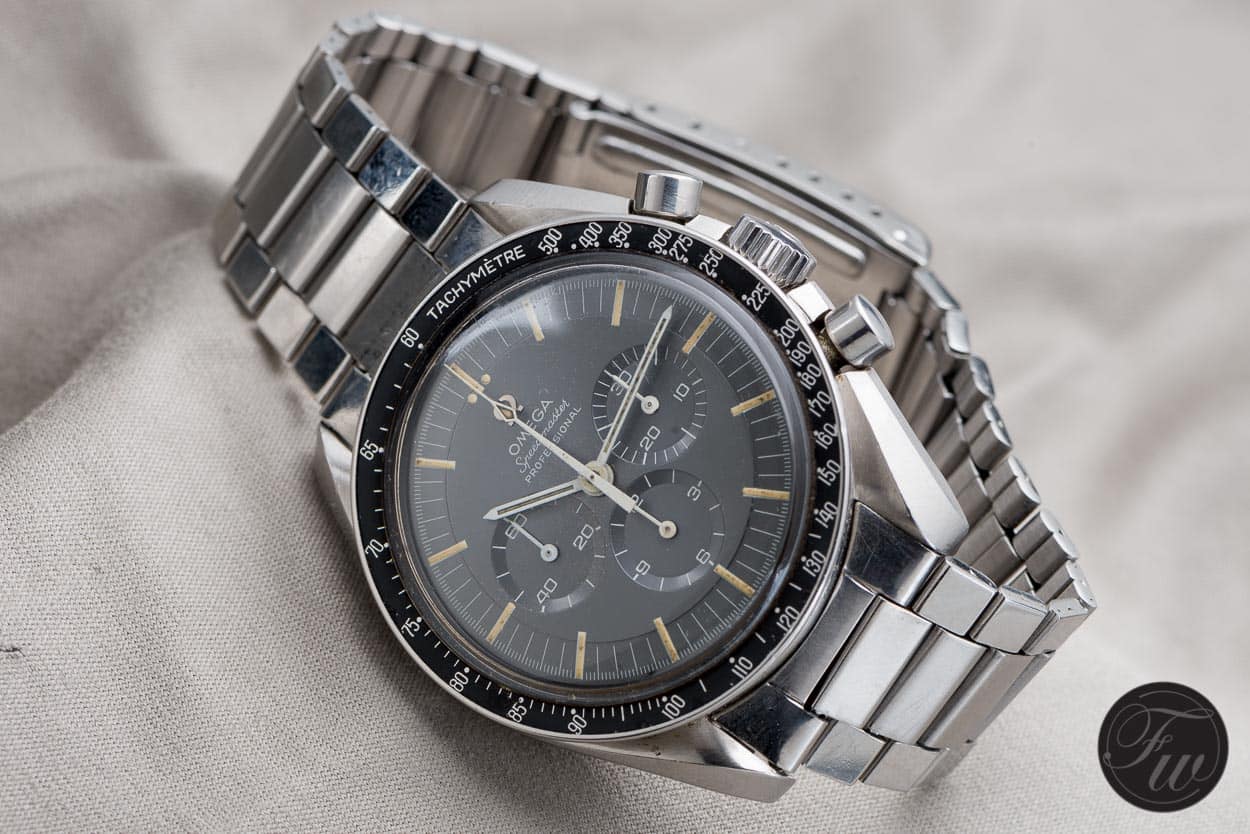Speedy Tuesday – Omega Speedmaster Professional 145.022 Buyer’s Guide Part 1
While the Speedmaster models with calibre 321 are getting more scarce, many of you are after the Speedmaster Professional 145.022. This is the reference that was introduced in 1968 and did not only have a printed logo on the dial and a new seconds hand, it also came with a new movement.
The calibre 861 movement was also Lemania based, but instead of a column-wheel mechanism, it uses a cam / shuttle system for the chronograph operation. This new movement (different balance wheel, higher frequency, new construction etc.) was the base for the movement that we still find in today’s Omega Speedmaster Professional ‘Moonwatch’ models, the calibre 1861.
Omega Speedmaster Professional 145.022
Let’s also make it clear at the beginning of this article, that there was also a ‘transitional’ model in 1968, that still had the aesthetics of the caliber 321 Speedmaster 145.012 reference, but with the new caliber 861 movement fitted.
We get a lot of “help” requests in our Fratello mailbox asking us about this exact Speedmaster reference and how to prevent it from stepping into pitfalls.
In this first part of the Omega Speedmaster Professional 145.022 buyer’s guide, I will answer some of the more generic questions that we get in our mailbox. In the second part, I will go into the details of the 145.022.
Why is the Speedmaster Professional 145.022 so in demand?
The Omega Speedmaster Professional 145.022 is the reference that has quite a bit to offer. First of all, it is a vintage piece that still comes at an affordable price, depending on the production year and condition. There are a few variations, each of them making it an interesting piece for a collector. You can go after a pre-Moon landing model, a Post-Moon model and if so, choose from a couple of different casebacks that Omega used to indicate that it is the watch that went to the Moon.
Near, But Not On The Moon
Officially, the 145.022 didn’t go to the Moon, as Omega delivered the predecessors of this watch, the 105.012 and 145.012 with caliber 321 movements as official Moonwatch. Astronaut Ron Evans actually had a 145.022 (image below) on board of the Apollo 17, for the purpose of a heat flow experiment. So it was never on the Moon, but very close. On the wrist of Ron Evans was, of course, a calibre 321 145.012/105.012.
The 145.022 Is Interesting
So why not go after a 105.012 or 145.012? Price has to do with that of course, where the Speedmaster Professional 145.022 is still relatively affordable, the prices of the caliber 321 column-wheel models are going up rapidly these days. You can read about that here, but an all original 145.012 with caliber 321 movement in good condition will be difficult to source from a dealer below €8000 Euro.
Let alone the fact that it becomes more difficult to find one that has not been tampered with. The 145.022 can be found in an untouched condition more easily and if you are pushing it, find one with box and papers (but you will pay).
The Speedmaster Professional 145.022 has a long time span when it comes to production. The first 145.022 was introduced in 1968 and this reference was used till around 1981. Then, Omega started using 145.0022 as a reference number. More below.
Minor Changes
You could say that things only changed after Omega started using Super-LumiNova and the later caliber 1861 movement in 1997. That is not really fair of course, as the original Speedmaster Professional 145.022 had a slightly different dial for a couple of years as well as some other minor differences. And different bracelets. Omega also started using different reference numbers (PIC coding) or better said, they added a reference number as 145.022/145.0022 is still being used to indicate the case that is being used. In 1988 Omega started using a PIC coding system and the first Moonwatch reference was 3590.50 (till 1996).
Condition Makes It Interesting
Another reason to go after a Speedmaster Professional 145.022 is that you will be able to find them in pristine condition but also in a pretty worn condition. Something that isn’t per definition a bad thing. Personally, I like my vintage watches to be ‘worn’ a bit and show signs of a previous owner who had fun with it. You can also search for dials that discolored a bit (or faded to brown entirely, although these fetch high prices these days).
Heck, they even come in blue and grey dials. If the condition is important to you, the 145.022 is very interesting as you will even come across some hardly used sets from the early 1980s sometimes.
But let’s start with some basic things.

Speedmaster 145.022
1968 – Omega Caliber 861
Omega’s caliber 861 is the successor of the caliber 321 that Omega used in the Speedmaster from 1957 to 1968. I’ve been told once by one of the former Omega Archivists that the caliber 861 was actually used since October 1968, but that is something I can’t confirm based on data. Let’s just say the caliber 861 movement was introduced in 1968. Omega did so for two reasons: the movement was more accurate than the caliber 321 that ticked at 18,000vph (instead of 21,600) and it was also cheaper to produce.
Omega also started using the caliber 861 for other Speedmaster variations, like the Mark II. The copper colored movement had a shuttle cam system for the chronograph instead of the column-wheel. The pushers, therefore, are not as silky in operation but do their work precisely nevertheless.
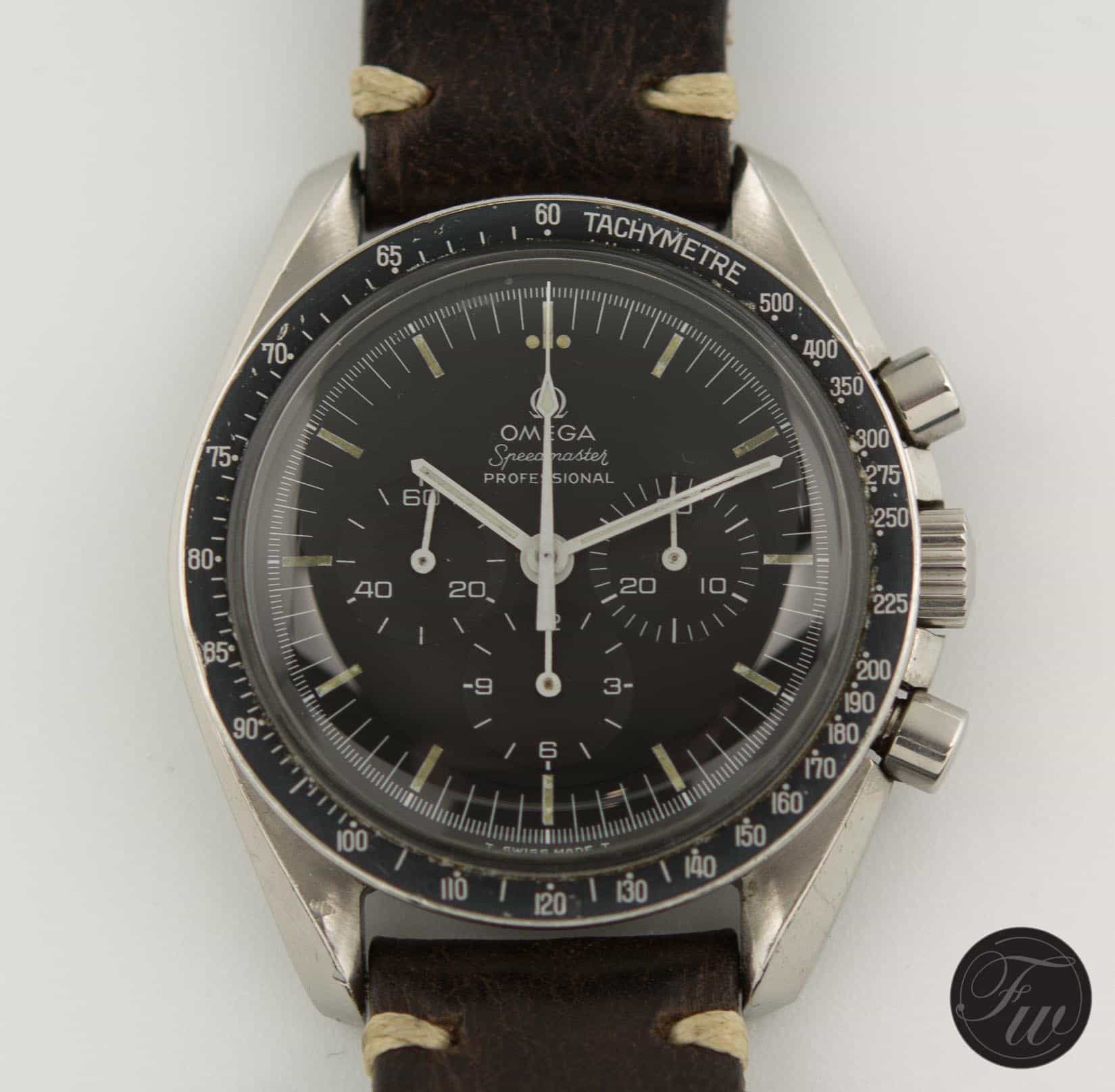
Speedmaster Professional 145.022-69 on a leather strap
Caliber 861 iterations
Below an image of the caliber 861, taken from my Mark II, but is identical to the movements used in the regular Speedmaster Professional 145.022 and later 145.0022 and 3590.50 up to the aforementioned 1997 when Omega started using the caliber 1861. Later on, the caliber 861 came with a Delrin brake and yellow (gilt) and rhodium plated movements, as well as luxury finished models (861L and 863). I will go into some more detail in the second part of this article, but for now, it is sufficient to know that the hand-wound caliber 861 movement was used in the Omega Speedmaster Professional 145.022 and that there are some different iterations of this movement. For the versions with a transparent caseback that used the 861L and 863 movements, the chronometer graded version (caliber 864) and the caliber 866 moon phase complication model, Omega also used different reference numbers so these watches are not in the scope of this buyer’s guide.
Variations of the Speedmaster Professional 145.022
There are a couple of different versions of the Omega Speedmaster Professional 145.022. Especially if you are willing to also include gold and bi-color versions, it can get really interesting. In 1969 Omega introduced the often discussed Speedmaster Pro Apollo XI commemorative edition, with a production run of 1,014 pieces only. This is also a reference 145.022, but with “BA” (yellow gold) as a prefix. You will find more information about this model in the article we did on all the gold Speedmaster Professional models. Then there is the bi-color model, indicated with “DD” before the reference number, click here.

BA145.022 – the gold Apollo XI commemorative edition from 1969
References
However, if we only look at stainless steel watches, you could say there are a number of versions:
- 145.022-68 ‘Transitional‘
- 145.022-69
- 145.022-71
- 145.022-74
- 145.022-76
- 145.022-78
After that, in 1981, the 145.022 becomes the 145.0022 (but the case reference remained 145.022, to make it more confusing). The -XX indicates the production year of the caseback. A common made mistake is that this also indicates the exact production year of the entire watch. For example, the 145.022-69 was produced from 1969 to 1971.
How does it work?
The fact that a case back indicates 145.022-76 and -78 for example, does not mean that Omega did not produce any Speedmaster Professional 145.022 watches in 1977. Always refer to the serial or movement number (not to be confused with caliber number) that is engraved on the movement. The 145.022-78 was replaced by the 145.0022 around 1981. On current models, you will find this serial number also on the inside of one of the lugs. Below, an example of my 3570.50, with the serial number in one of the lugs.
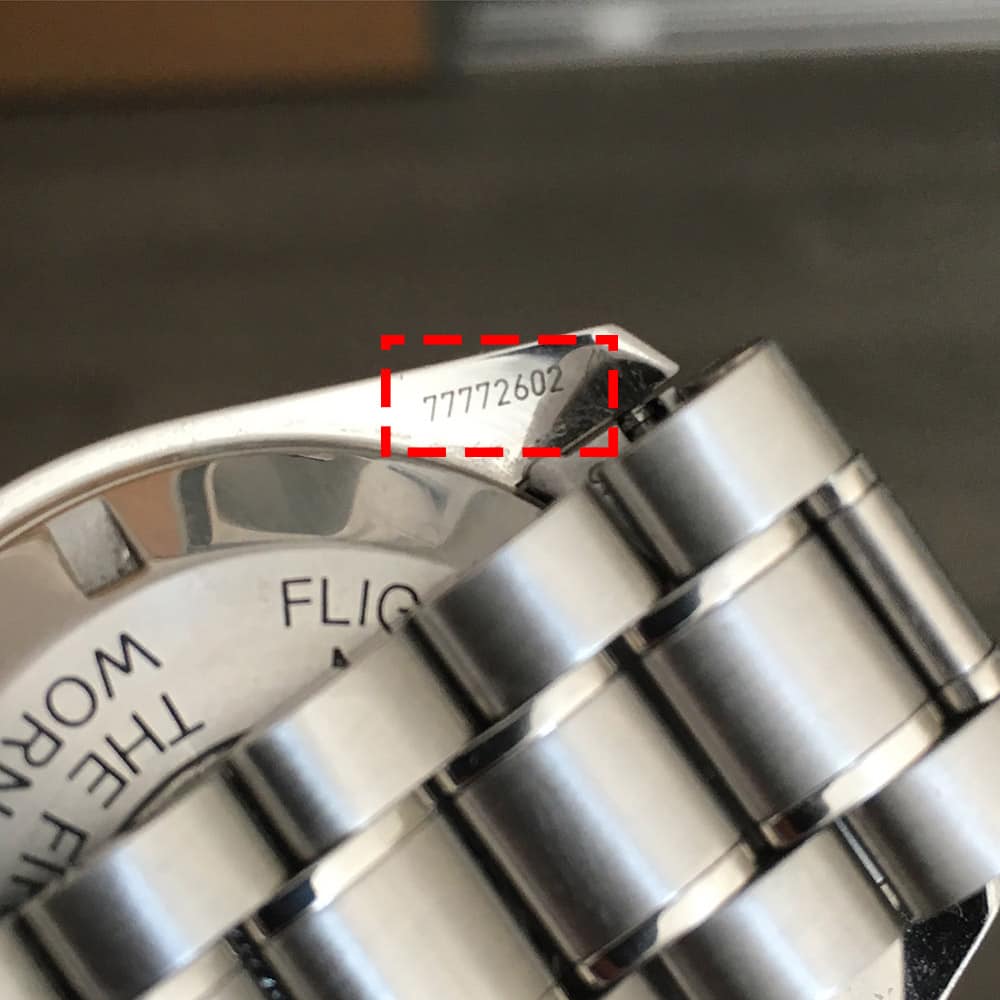
Extract of the Archives
Even with these serial or movement numbers, it can get quite tricky, as they produced the movements with the serial numbers engraved in there during the production process of the movement, not when they assembled the watch. A relatively accurate overview of Speedmaster serial numbers and matching production years can be found here. Note that it isn’t 100% accurate, for that, you will need to request an extract of the archives.
A movement might have been on the shelf for quite some time while lower numbers were already used for watches. The only way to be absolutely certain about the production year of a Speedmaster is by using their Omega Museum website to request an extract of the archives. We did an in-depth write-up on these Extracts of the Archives from Omega (and why they charge so much money for it). Update: Omega changed its Extract of the Archive procedure a bit. We will bring an update on this soon, but the price is still CHF120 (Swiss Francs) and you will receive an extract by regular mail (the format changed a bit).
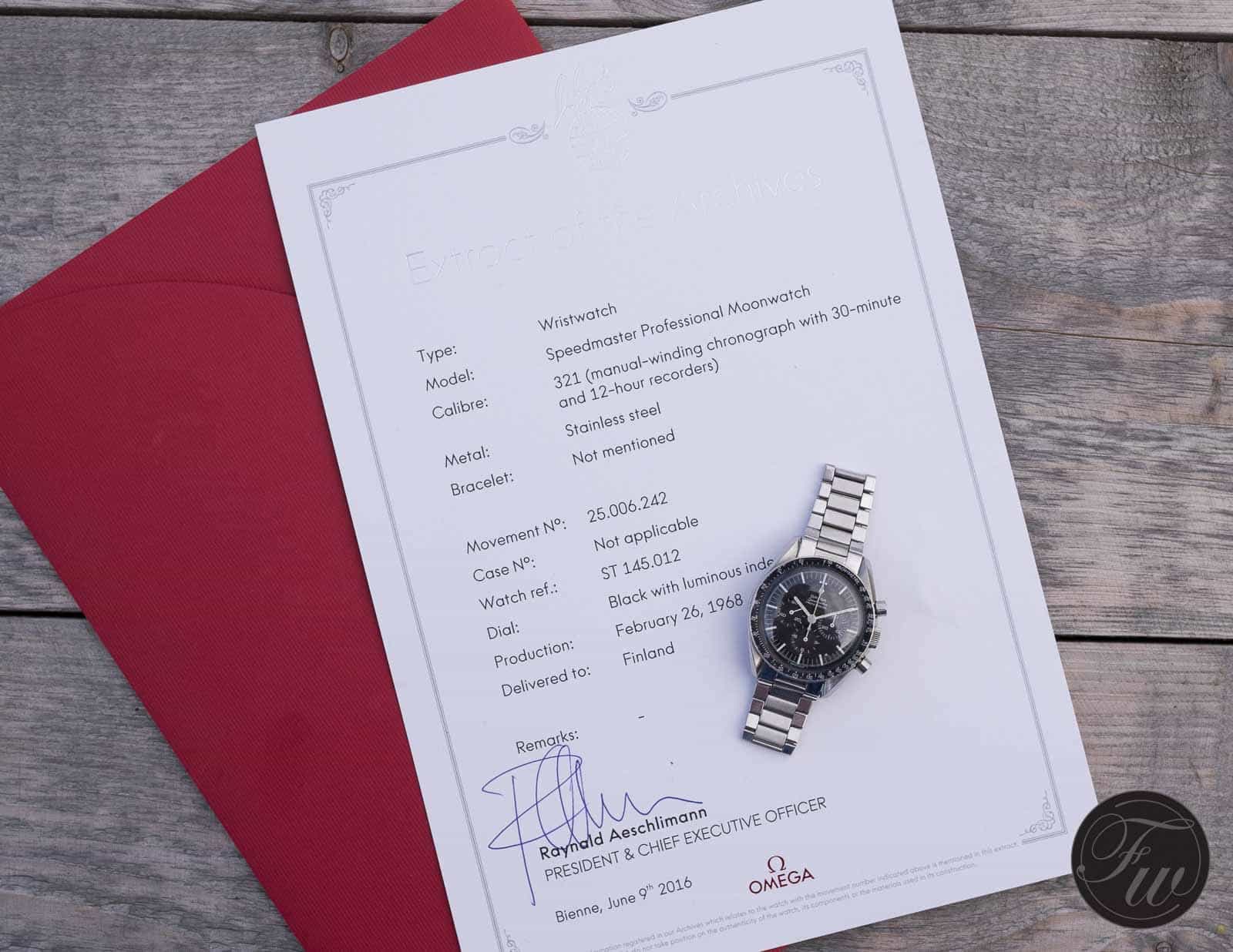
The former Extract of the Archives, showing you the exact production year. The new format is smaller, but with the same information.
Case backs, dials, and bracelets
The first 145.022, with the -68 indicator on the inside of the caseback is being referred to as the transitional model. It already has the new style hands and caliber 861 movement, but with the dial with applied Omega logo of the caliber 321 movement. In 1969, Omega started using the white printed logo on the dial. Those first dials still had the stepped sub registers – where the counters are somewhat deeper in the dial than on later models – and appearance of those caliber 321 models except for the hands and logo.
In the second part of this Omega Speedmaster Professional 145.022 buyer’s guide, I will go by these versions in more detail. The same goes for the bracelet styles that have been used, case backs and bezels.
Where to look?
Before we go into the pricing details next week (which I can only do per variant, as it matters quite a bit whether you have a straight script case back, brown dial, transitional model from 1968 or plain 145.022-69 model), I will give you some tips where to look for these Omega Speedmaster Professional 145.022 timepieces.
The best buys I personally had when it comes to Speedmaster watches, including the 145.022 models, are on eBay and by people offering them to me. The latter one is quite rare, so have a look at eBay and websites like Chrono24 (especially when offered by professional sellers, the prices are a bit high, but you do have some buyer’s security using their Trusted Checkout process) and WatchRecon (that searches through a number of sales forums online). Also, keep track of the Sales Forums on OmegaForums for example.
Some Indications
On eBay, these models run from $3500 for a nice 145.022 reference to well over $13.000 USD for a 145.022 with a tropic (brown) dial. You will also find offers with box and papers, but expect to pay quite a bit extra for that. You should also check whether the papers really belong to the watch, and aren’t blanks or blanks that were recently filled in. Boxes are difficult to check of course. The earlier 145.022 references tend to be more expensive than the later iterations in the 1970s, as you can imagine. Quirky things, like a watch with the ‘220’ bezel, non-NASA inscription, straight writing engraving etc, you will find some steep prices.
Our piece of advice in this is to go for a Speedmaster 145.022 in a condition that you want it to be in. Rather pay a bit more and have something you will truly enjoy, than being stuck with a watch that is in a bad shape – or at least not in the condition you want it to be in – that you won’t wear and appreciate.
Auctions
Auctions are another possibility, whereas Christie’s, Antiquorum, Auctionata, Watches of Knightsbridge and so on have their fair share of Speedmaster offerings.
So, how do you make sure not to step into these pitfalls and end up with a watch that has been put together or has 3rd party parts on it? Our detailed guideline per reference number is most important to identify the good ones from the fakes.
It is not rocket science (no pun intended), but you need to know what to look for and how to look for these things.
Part II of this Speedmaster Professional 145.022 Buyer’s Guide can be found here
*This article appeared first on October 6th 2015 here on Fratello Watches. Latest update from December 2nd, 2019. We added more information regarding the timeline of the 145.022, updated pricing information, added variations and so on. We will keep updating this article in the future to give the most accurate (buying) information for the 145.022.

